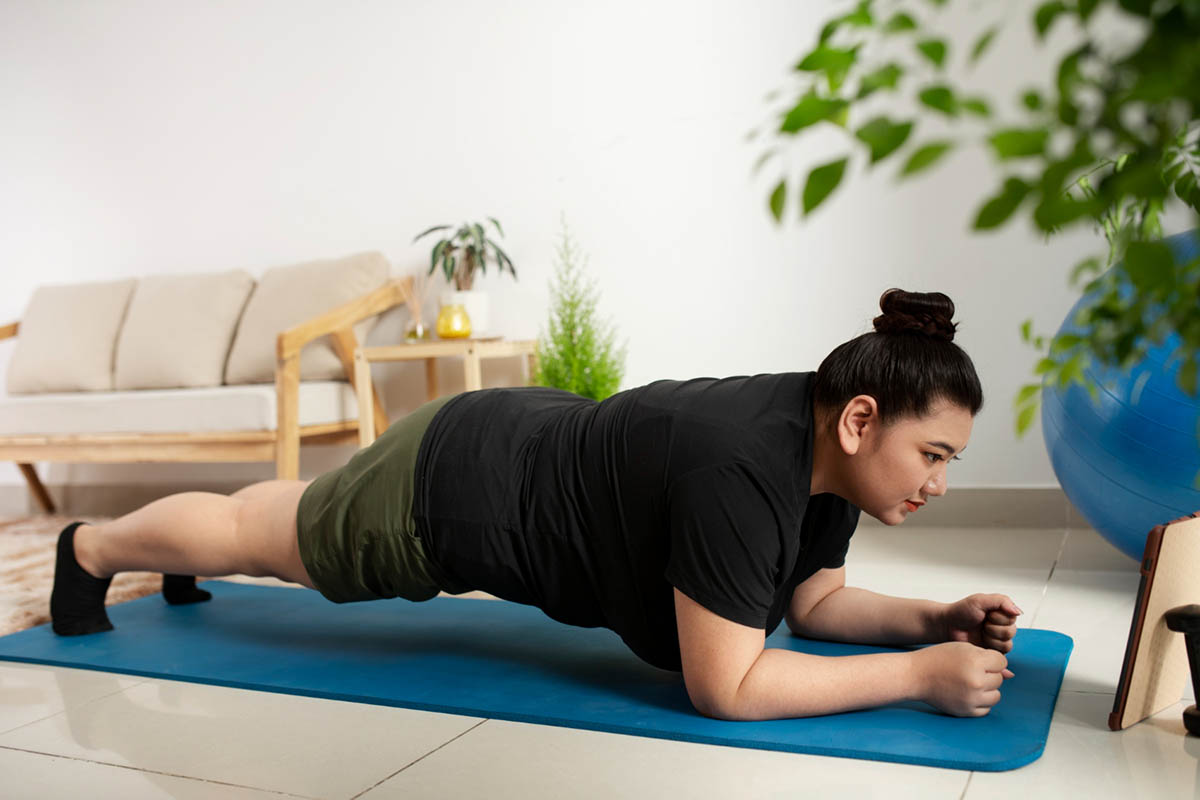Hip impingement, also known as femoroacetabular impingement (FAI), is a condition where the bones of the hip joint are abnormally shaped and rub against each other, causing hip pain and limited movement. This condition can affect anyone, from athletes to sedentary individuals, and it can significantly impact daily activities. Despite being common, the term “femoroacetabular impingement” was only coined in 2003. The condition is prevalent, affecting an estimated 10% to 15% of adults. Health professionals now recognize that hip impingements are a leading cause of early osteoarthritis. Fortunately, specific hip impingement exercises can help manage the pain and improve hip function. In this blog, we’ll explore what hip impingement is, how exercise can help, and which exercises are most effective for relief.
What is Hip Impingement?
Hip impingement occurs when there is abnormal contact between the femoral head (the ball) and the acetabulum (the socket) of the hip joint. This abnormal contact can be caused by:
- Cam impingement: where the femoral head is not perfectly round, causing it to jam into the acetabulum.
- Pincer impingement: where extra bone extends out over the normal rim of the acetabulum, resulting in the labrum (the cartilage that rims the socket) being pinched.
- Combined impingement: a combination of both cam and pincer impingement.
These irregularities can lead to pain, stiffness, and a decreased range of motion, impacting activities like walking, running, and even sitting for extended periods. Common symptoms of impingement include hip pain, reduced hip function, and difficulty performing usual activities.
How Exercise Helps Hip Impingement
Engaging in the right hip impingement exercises can offer numerous benefits for individuals with hip impingement. Here’s how exercise can help:
Improves Range of Motion
Exercises can help stretch and lengthen the hip muscles around the hip, increasing flexibility and range of motion.
Strengthens Supporting Muscles
Strengthening the muscles that support the hip joint, such as the gluteal muscles, core, and thighs, can help stabilize the hip and reduce stress on the joint.
Reduces Pain and Inflammation
Regular, low-impact exercise can improve blood flow to the affected area, reducing inflammation and hip impingement pain.
Corrects Muscle Imbalances
Targeted exercises can address muscle imbalances, ensuring that all muscles around the hip are working together effectively.
Promotes Healing
Exercise stimulates the body’s natural healing processes, promoting tissue repair and recovery.
Enhances Joint Lubrication
Movement helps distribute synovial fluid, which lubricates the joints and reduces friction.
Improves Proprioception
Exercises can improve proprioception, which is the body’s ability to sense its position and movement in space, leading to better coordination and balance.
Facilitates Weight Management
Regular physical activity helps in maintaining a healthy weight, reducing the load and stress on the hip joint.
Effective Exercises for Hip Impingement

Stretching
Stretching exercises can help reduce tension and improve flexibility around the hip joint.
Hip Flexor Stretch
- Kneel on one knee with the other foot in front.
- Push your hips forward while keeping your back straight.
- Hold for 30 seconds and switch sides.
Piriformis Stretch
- Lie on your back with knees bent.
- Cross one ankle over the opposite knee.
- Pull the uncrossed leg towards your chest.
- Hold for 30 seconds and switch sides.
Groin Stretch
- Sit with your feet together and knees bent out to the sides.
- Gently press your knees towards the floor with your elbows.
- Hold for 30 seconds.
Gluteal Stretch
- Lie on your back with knees bent.
- Cross one ankle over the opposite knee and pull the uncrossed leg towards your chest.
- Hold for 30 seconds and switch sides.
Adductor Stretch
- Stand with feet wide apart.
- Shift your weight to one side, bending the knee and keeping the other leg straight.
- Hold for 30 seconds and switch sides.
Core Exercises
A strong core is crucial for hip stability and reducing the strain on the hip joint.
Transversus Abdominis (TrA)
- Lie on your back with knees bent.
- Pull your belly button towards your spine.
- Hold for 10 seconds and repeat.
Hip Twist
- Sit on the floor with legs extended.
- Twist your torso to one side, placing the opposite hand on the knee.
- Hold for 30 seconds and switch sides.
Clam
- Lie on your side with knees bent and feet together.
- Lift the top knee while keeping feet together.
- Lower and repeat.
Planks
- Lie face down and lift your body onto your forearms and toes.
- Keep your body straight and hold for 30 seconds to 1 minute.
4-point Kneel with Leg/Arm Extension
- Start on hands and knees (quadruped position).
- Extend one arm and the opposite leg simultaneously.
- Hold for a few seconds and switch sides.
Strengthening Exercises
Strengthening the muscles around the hip can provide better support and reduce pain.
Bridging
- Lie on your back with knees bent and feet flat.
- Lift your hips towards the ceiling, squeezing your glutes.
- Hold for a few seconds and lower.
Squats
- Stand with feet shoulder-width apart.
- Lower your body as if sitting back into a chair.
- Keep your back straight and knees over your toes.
- Return to standing.
Hip Abduction/Adduction
- Lie on your side with legs straight.
- Lift the top leg towards the ceiling and lower.
- Switch sides.
Step-Ups
- Step onto a bench or step with one foot.
- Bring the other foot up and step back down.
- Alternate legs.
Hip Impingement Exercises to Avoid
While exercise is beneficial, certain movements can exacerbate hip impingement. Here are some hip impingement exercises to avoid:
- Deep Squats: This movement places excessive pressure on the hip joint, exacerbating the impingement.
- Deep Lunges: Similar to deep squats, deep lunges can push the femoral head into the acetabulum, increasing pain and irritation.
- Abdominal Crunches: These can increase the pressure on the hip flexors, leading to further discomfort and pain.
- Bent-Over Rows: This exercise can strain the lower back and hips, worsening hip impingement symptoms.
- High-Impact Activities: Activities like running or jumping can jolt the hip joint, leading to increased pain and inflammation.
- Leg Presses: The leg press machine often requires a deep hip flexion, which can aggravate hip impingement.
- Deadlifts: Improper form or excessive weight can place undue stress on the hip joint and lower back.
- Excessive Hip External Rotation: Movements that force the hip to rotate outward excessively can worsen the impingement.
- High Jumps and High Knees: These high-impact activities can strain the hip joint, leading to increased pain and inflammation.
The Role of Physical Therapy in Hip Impingement

Physical therapy, particularly personalized hip impingement physical therapy, plays a crucial role in managing this condition. A physical therapist can design a personalized exercise program tailored to your specific needs, monitor your progress, and make adjustments as needed. They can also provide manual therapy techniques to improve mobility and reduce pain. Physical therapy exercises focus on improving patient outcomes and can be part of a conservative care protocol that emphasizes non-surgical treatment options.
How Austin Manual Therapy Associates Can Help You
At Austin Manual Therapy Associates, we specialize in providing personalized physical therapy solutions to alleviate hip pain and hip impingement to enhance your quality of life. Our expert therapists are skilled in treating conditions like impingement, utilizing a combination of manual therapy techniques, targeted exercises, and patient education. We offer conservative therapy options and can help you avoid the need for surgical intervention. Whether you are dealing with femoroacetabular impingement or other musculoskeletal issues, our dedicated team is here to help you achieve optimal hip function and long-lasting relief.
Conclusion
Hip impingement can be a debilitating condition, but with the right exercises and physical therapy, you can manage your symptoms and improve your quality of life. Incorporate these exercises into your routine, avoid those that can worsen your condition, and seek professional help when needed.
FAQs
Is stretching good for hip impingement?
Yes, stretching can help reduce tension and improve flexibility, which is beneficial for managing hip impingement. Hip impingement stretches can be part of a nonoperative protocol to decrease symptoms and improve function.
Can hip impingement heal on its own?
Hip impingement may not heal completely on its own, but symptoms can be managed effectively with appropriate exercises and physical therapy. Conservative treatment, including activity modification and physical therapy exercises, can significantly improve patient-reported outcomes.
What is the most comfortable position for hip impingement?
Sleeping on your side with a pillow between your knees or on your back with a pillow under your knees can help reduce discomfort from hip impingement. Adjusting your daily living activities and finding functional positions that reduce pain can also be beneficial.





